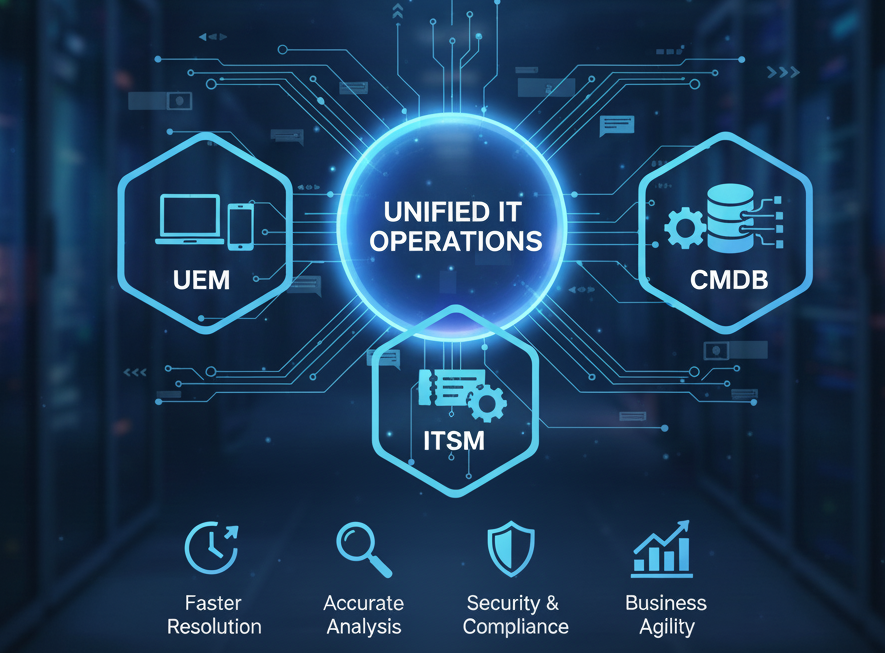Integrating UEM with ITSM & CMDB: A Blueprint for Unified IT Operations
- Home
- Uncategorized Cloud Security
- Integrating UEM with ITSM & CMDB: A Blueprint for Unified IT Operations
Integrating UEM with ITSM & CMDB: A Blueprint for Unified IT Operations

In today’s complex IT environments, managing endpoints in silos no longer works. Enterprises need real-time visibility, faster incident response, and secure control over every connected device.
Enter Unified Endpoint Management (UEM) — but its power multiplies when integrated with ITSM (IT Service Management) and CMDB (Configuration Management Database).
What Do These Terms Mean?
UEM (Unified Endpoint Management)
A centralized platform to manage, monitor, and secure all endpoints (laptops, phones, tablets, IoT devices) across an organization, regardless of their OS or location.
ITSM (IT Service Management)
A structured approach to delivering and supporting IT services, typically based on standardized frameworks like ITIL. It involves processes like incident management, change management, and service request fulfillment.
CMDB (Configuration Management Database)
A centralized repository that stores information about IT assets (called Configuration Items, or CIs) and their relationships. CMDB is the backbone for making informed decisions during incident resolution or service changes.
Why Integration Matters
Modern IT environments demand a single source of truth for asset status, ownership, and relationships. When UEM data — like device health, user access, app status — feeds directly into your ITSM workflows and populates your CMDB, you unlock operational intelligence across the stack.
How They Work Together
When these three systems are integrated, IT support transforms from reactive to proactive:
- UEM detects an anomaly on a user device—say, a failed patch or a misconfigured app.
- The UEM triggers an alert, which automatically opens a ticket in the ITSM system.
- The ITSM platform consults the CMDB to understand what services are affected, what dependencies exist, and how critical the device is to business operations.
- IT support uses the UEM platform’s remote troubleshooting tools to diagnose the issue in real-time—remotely viewing the screen, pushing policies, or restarting services.
- Upon resolution, the incident is closed in ITSM, and the CMDB is updated to reflect the latest configuration status.
Key Benefits of Integration
- Faster incident resolution with contextual device data inside your ticketing system
- Accurate service impact analysis using real-time configuration relationships
- Reduced MTTR with automation triggers from UEM into ITSM (e.g., auto-ticket creation)
- Policy enforcement linked to service levels, roles, and business-critical assets
- Continuous compliance tracking via CMDB-backed governance
What Integration Looks Like in Practice
Imagine a frontline tablet goes out of compliance. Our UEM detects it, pushes a configuration fix, and simultaneously opens an incident in your ITSM tool — all while updating the CMDB with the latest compliance status and app version. This isn’t just automation — it’s intelligent remediation.
A Foundation for Unified Ops
Integrating UEM, ITSM, and CMDB is an operational necessity. It empowers your IT teams with context, control, and confidence. As your endpoints scale across IT, OT, and IoT environments, this unified approach ensures your service quality, security posture, and business agility stay intact.
Want to see this integration in action? Request a demo to explore how OpenIY brings unified intelligence to endpoint operations.